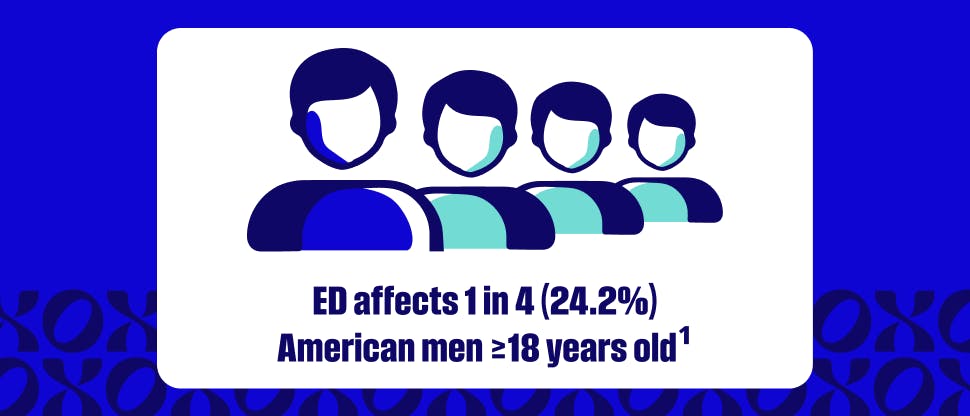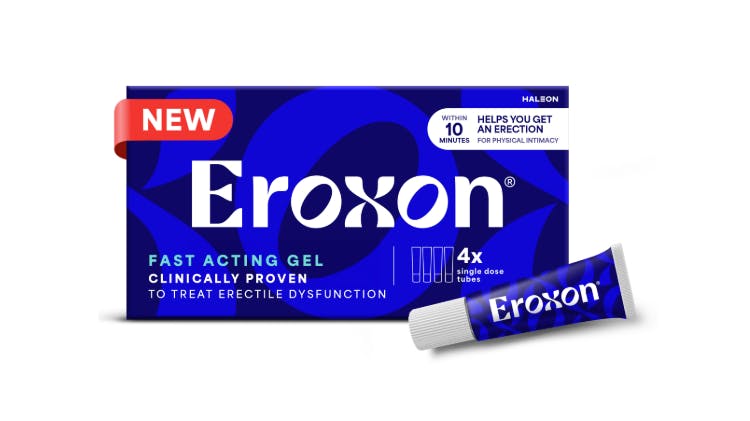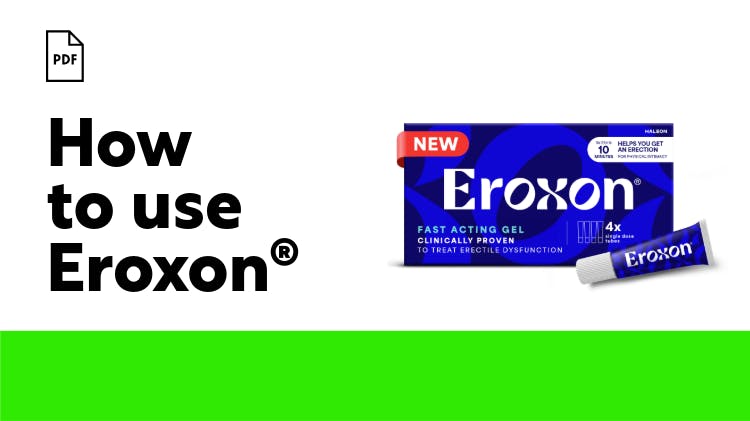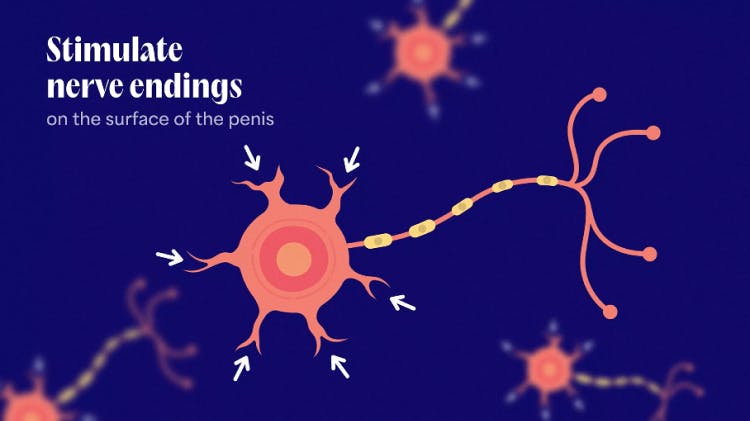Erectile Dysfunction (ED) Overview

Erectile dysfunction (ED) is highly prevalent—even in younger men1
ED is a common male sexual condition that can reduce quality of life for patients and their partners.2 The incidence and severity of ED tend to increase with age, often associated with underlying comorbidities such as CVD and diabetes; however, recent data suggest that ED is also common among younger males.1

Prevalence of ED in the United States
The true prevalence of ED can be challenging to accurately report since patients may not seek medical attention for the condition and healthcare providers may not openly ask about it during consultations.2 However, data suggest an ED prevalence rate in the US of over 20%, or 1 in 4 (24.2%) men.1
While ED can increasingly affect men as they get older, there is a trend of higher rates among the younger age groups than was shown in previous prevalence data.1
In a US study of 3,875 participants, among those meeting the diagnostic criteria, the prevalence of ED was:1
- 17.9% in those 18-24 years old
- 13.3% in those 25-34 years old
- 12.7% in those 35-44 years old
- 25.3% in those 45-54 years old
- 33.9% in those 55-64 years old
- 48% in those 65-74 years old
- 52.2% in those ≥75 years

ED in younger men is a multifaceted issue
The increasing prevalence of ED in younger men may be due to several factors. ED is now recognized as a multidimensional disorder related to organic conditions, psychogenic status, or a combination of both.2,3 Identifying the underlying etiology of ED in each patient can help ensure appropriate diagnosis and management of this condition.
| Potential physiologic causes in younger men2,3 | Potential psychogenic causes in younger men2,3 |
|
|
There can be a social stigma associated with ED
Men may feel embarrassed to openly discuss ED with partners and even healthcare providers, which can delay diagnosis and treatment. The emotional burden can weigh heavily on not only patients, but on their partners as well.4 They may experience a loss of confidence, inability to feel joy and pleasure, and may withdraw from sexual intimacy.5 Their partners may also lose confidence, perceiving it as a problem with their own sex appeal, and feel isolated, frustrated, and resentful.5
Many men experiencing ED may not self-identify with having the condition
There are a significant number of men not treating their ED and suffering in silence.1 It is estimated that only 16.7% of sufferers have talked with their healthcare provider about their erectile difficulties.1 Taking a proactive approach and discussing any potential symptoms is crucial. Your engagement with patients can significantly influence patients’ willingness to discuss their symptoms—and ultimately lead to a proper diagnosis and treatment.
Early conversations can uncover potential ED issues

Available treatments and unmet needs
Fortunately, there is a wide range of therapeutic options available to address ED, including oral PDE5 inhibitors, external vacuum devices, implanted devices, urethral suppositories, and intracavernosal injections6 - and now, a topical treatment gel.
Traditional therapies may not fully meet patients’ expectations
Studies show high discontinuation rates for ED treatments, including PDE5 inhibitors, due to:7
- Insufficient efficacy
- Side effects
- Treatment costs
Oral PDE5 inhibitors are widely accepted as the standard treatment for ED, but there could be potential concerns for some patients.
- Typical time to onset for a leading PDE5 treatment can be as long as 60 minutes8
- Wait time may be an issue for some patients and “pre-planning” can affect spontaneity and intimacy
- Patients on certain medications may not be candidates. PDE5 inhibitors are contraindicated in patients taking certain medications—for example, nitrates8,9
The FDA-cleared topical ED treatment Eroxon® may be an appropriate choice for some patients who are seeking safe and fast onset remedies
- An alternative to oral medication that may minimize side effects and contraindications
- Clinically proven to work within 10 minutes*
- OTC availability may improve access to clinically proven therapy for an otherwise undertreated population
ED: erectile dysfunction, PDE5: phosphodiesterase type 5.

ED patients are looking for certain attributes in ED therapy
According to a survey involving 500 ED patients, mild side effects, efficacy, ease of use and partner involvement are key when using ED treatment.10
| Q: "When considering a medication to treat erectile dysfunction, how important are each of the following to you?" | Eroxon® |
| Initiation and maintenance of erection: 87% | √ |
| No serious side effects: 87% | √ |
| Easy to use: 86% | √ |
| Increases intimacy/partner involvement: 84% | √ |
| Works quickly: 84% | √ |
| Allows me/us to be spontaneous: 82% | √ |
Eroxon® broadens your ability to treat ED while providing patients with a new option for safe, effective treatment.
Learn more about Eroxon®: an ED treatment gel clinically proven to work within 10 minutes.*





